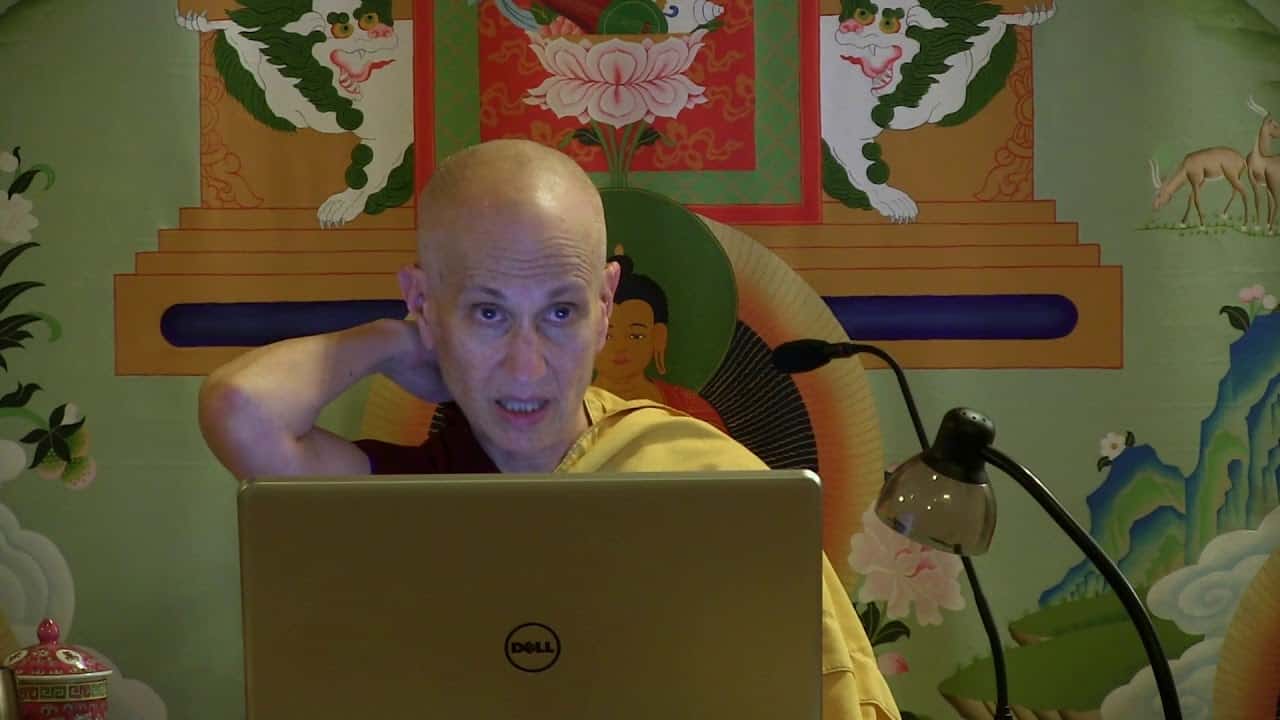Attaining serenity
Attaining serenity
The text turns to training the mind on the stages of the path of advanced level practitioners. Part of a series of teachings on the Gomchen Lamrim by Gomchen Ngawang Drakpa. Visit Gomchen Lamrim Study Guide for a full list of contemplation points for the series.
- Rejecting flawed methods for attaining concentration
- The length of a meditation session and what to do while meditating
- A review on faults and antidotes
- How to know when you have accomplished serenity
- Eliminating doubts about concentration
Gomchen Lamrim 124: Attaining Serenity(download)
Contemplation points
- It’s all about practice! Venerable Chodron said that like telling someone how to eat to be healthy where we have to practice by trial and error to see what is it like for our own bodies, so we must practice to understand what it is to attain the right level of looseness or tightness in our minds as we meditate. Why is it so important to develop personal experience in meditating to develop serenity and not just understand the teachings?
- Why is it so important to keep concentration meditations short when you first start meditating? What might a healthy meditation session to develop serenity look like in your own practice?
- The text explains that excitement arises due to attachment and laxity does not tightly apprehend the object of meditation. Where do you see these arise in your practice? What disadvantages of these two do you experience personally?
- Mindfulness and introspective awareness work together in our meditation sessions to help us stay on the object. Consider why the stronger our mindfulness is, the stronger our introspective awareness will be. With that in mind, what can you do, both on and off the cushion, to increase your mindfulness?
- Why is it so important to apply the appropriate antidotes to laxity and excitement? What are some of the antidotes you can apply to each?
- Consider the common factors which cause laxity and excitement to arise: not guarding the senses, not eating with measure, sleeping, lacking effort, and not applying introspective awareness. With which of these do you most struggle? What can you do, on and off the cushion, to begin to counter these factors?
- Consider the specific factors which cause laxity to arise: sleep, making your sessions too long, and not enjoying or caring about meditation. Also consider the specific factors that cause restlessness to arise: not having meditated enough on the disadvantages of samsara, holding the object too tightly, and attachment to loved ones. With which of these do you most struggle? What can you do, on and off the cushion, to begin to counter these factors?
- Consider some of the benefits of having access concentration: the ability to suppress afflictions temporarily, pliancy arises quickly and is partially maintained after the session, the five hindrances hardly ever occur, the afflictions are weak, and stability and clarity are great. What does thinking about these benefits do for your mind? What might it be like to experience these benefits in your life? How might it transform the way you interact with the world?
- Better understanding the process of cultivating meditative stability and the many benefits of doing so, resolve to begin cultivating this perfection in your meditation sessions.
Venerable Thubten Chodron
Venerable Chodron emphasizes the practical application of Buddha’s teachings in our daily lives and is especially skilled at explaining them in ways easily understood and practiced by Westerners. She is well known for her warm, humorous, and lucid teachings. She was ordained as a Buddhist nun in 1977 by Kyabje Ling Rinpoche in Dharamsala, India, and in 1986 she received bhikshuni (full) ordination in Taiwan. Read her full bio.


